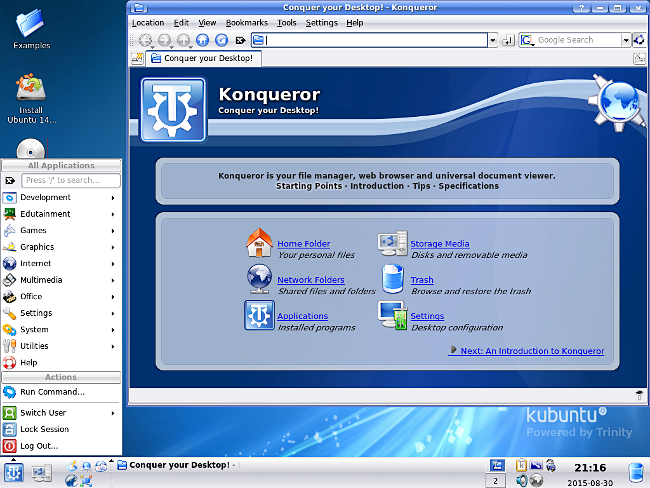Digest of important Linux events 2016 - anniversaries
Before diving into the abyss of the events of 2017, we should look back and note the important events and trends of the past year. An attempt to cover all the important events in the world of Linux and open source software with one post was presumptuous, as the year turned out to be rich in anniversaries, and some of them went unnoticed in Habré. Because of this, the conceived digest had to be broken apart, this one is dedicated to significant anniversaries in 2016: Linux, Vim, KDE and Git .
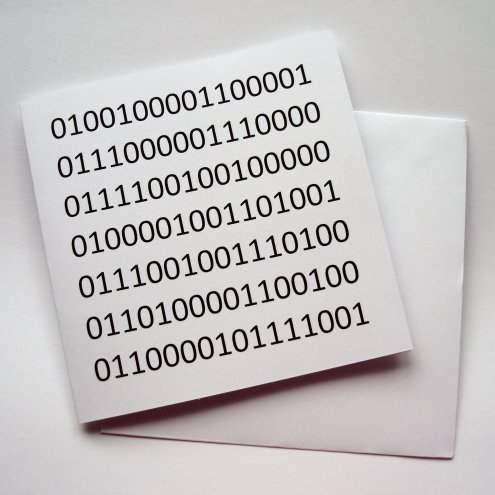
25th anniversary of linux
August 25, 2016 was the 25th Birthday of Linux . At that time it was 10 thousand lines of code and a message to the comp.os.minix newsgroup. On the Habra-post link devoted to this event where the history of creation and development of Linux, statistics of releases and the curious facts is stated.
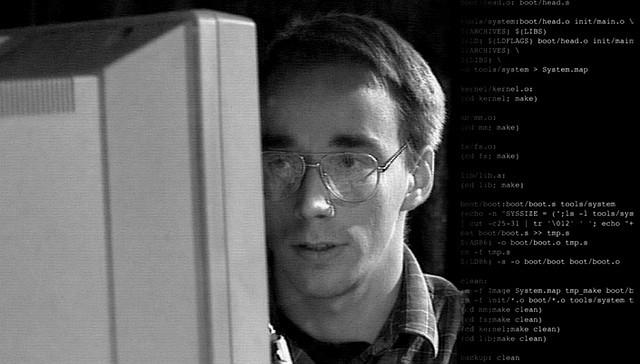
Interestingly, Linux might initially be called Freax ("free", "freak", and X (Unix)). This name was given to his project by Linus himself. But Ari Lemke (Ari Lemmke), who at the request of Linus laid out the kernel on his FTP server, called the directory with the kernel “linux” .
But it all started with a terminal emulation program. I needed a program through which a student Linus Torvalds could connect to the server of his university, receive and send mail, read the news. Like a real hacker, he was not very attached to the outside world and spent most of his time on programming. When the terminal emulator was ready, it turned out that the drive driver is also needed to download and upload files. Accordingly, the file system driver was also needed. Then more and more functions.
I was spinning like a squirrel in a wheel: programming - sleep - programming - food (salty crackers) - programming - sleep - programming - shower (in a hurry) - programming. By the end of the work it became clear that my program was turning into an operating system. And I began to think about it not as a terminal emulation program, but as an operating system. This shift probably occurred in the dope of one of the lingering programming sessions. Was it day or night? I do not know. I am sitting in my old lab coat and working with an emulation program, equipped with additional functions. And then suddenly I understand that these functions have become so many that the program has become a working version of the operating system .
Linus Torvalds, "Just for fun".
Then it was still necessary to write the implementation of two hundred system calls, and for this it was necessary to get from somewhere the documentation of POSIX standards. The age of the Internet has not yet arrived, and this, too, was not a trivial matter. So, on the principle of porridge from the ax, the OS began to materialize.
Vim 25 years
In the same 1991, on November 2, Bram Moolenaar rolled out the first stable version of vim after three years from the start of work on the project. He needed the usual Unix vi , but on his Amiga PC this program was not ported. Vim originally got its name from the words vi imitation , i.e. imitation vi . Three years later, after vim 2.0 surpassed the original, the name changed to vi improved . In the past, the anniversary year came vim 8.0 .
Today, vim supports almost every conceivable OS and platform.
- AmigaOS
- Atari MiNT
- BeOS
- Dos
- Mac OS
- NextStep
- OS / 2, OSF
- RISC OS
- BSD
- Linux
- SGI
- Unix (IBM AIX, HP-UX, SGI IRIX, Sun Solaris, SCO OpenServer and others)
- Vms
- Win16 (Microsoft Windows 3.x), Win32 (Windows 4.x and Windows NT)
- Apple iOS
- Android
When followers of Notepad++ editor ask me what vim can do, I usually answer “this is like Photoshop, but for text”, and this comparison has the proper effect. I think that I don’t know how to use a quarter of vim capabilities, but even this is enough to drag out fairly labor-intensive and complex projects .
The photo shows the last of 724 pages of the Armenian-Russian dictionary , which we digitized using vim . Perhaps there are still text editors in which you can check the spelling of two dictionaries at the same time, but I don’t know them.
:setlocal spell spelllang=hy,ru 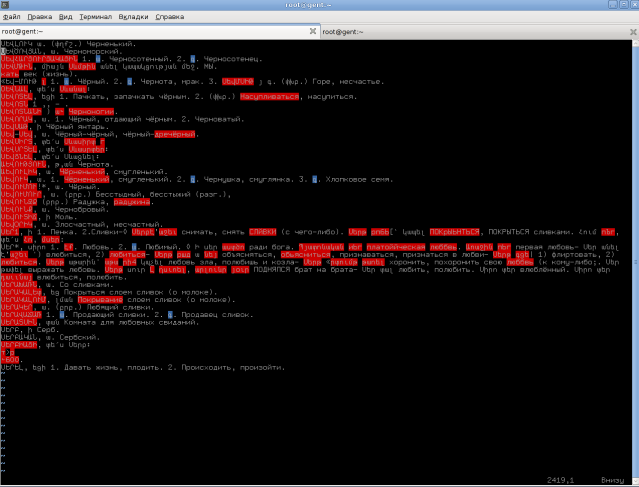
KDE 20 years
KDE was also an anniversary year, the project turned 20 years old. On Habré this event went unnoticed, it is necessary to fill this gap.
On October 14, 1996, Matthias Ettrich announced the creation of a modern and full-fledged free graphical environment for ordinary users, not system administrators, in which all applications and interface elements have the same design and general style of behavior.
- KDE 1.0 was released on July 12, 1998 - the first stable release.
- KDE 2.0 was released on October 23, 2000.
- KDE 3.0 - April 3, 2002 release .
- KDE 4.0 - January 11, 2008 release .
- KDE Frameworks 5 - released on July 7, 2014
- KDE Plasma 5 is similar to July 7, 2014.
The fateful and right decision was the use of the Qt library, a novelty from the Trolltech company, designed to replace the terrible Motif . Qt was played in favor of the quality, openness and cross-platform graphics toolkit. The KDE Free Qt Foundation ensures that Qt remains open and free to free software developers.
Today KDE is one of the largest open source projects. According to Open Hub:
- Over 21 million lines of code
- Over 1.1 million commits from> 4200 developers for all time
- Almost 30 thousand commits from 375 developers in the last 12 months.
The original KDE 1.0 .
But you can still drive it today, on the eve of its anniversary, the KDE Restoration Project developers ported the KDE 1.1.2 to modern Linux distributions.
The KDE 1 codebase is adapted for assembly by modern compilers and translated into the Cmake assembly tools. The historical code is placed in the regular KDE git repositories, which allows anyone who wants to build KDE 1 using the qt1, kde1-kdelibs and kde1-kdebase repositories. Fedora 25 contains KDE 1 installation packages, but they are not yet ready for publication .
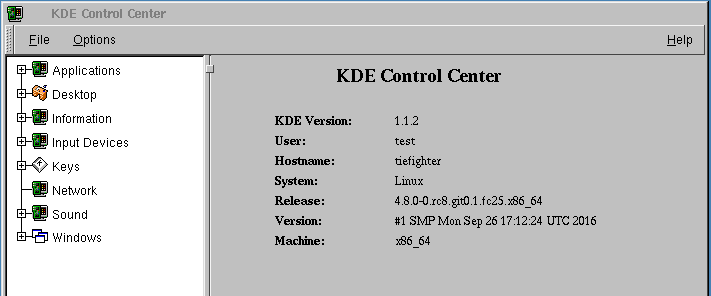
No one has ported KDE 2.0 yet, but you can admire it with the old Mandrake Linux 8.0 .
$ qemu-system-i386 \ -M pc-0.10 -m 2048 \ -boot order=ad,menu=on \ -drive file=mandrake8.qcow2 \ -usb -net nic,model=rtl8139 \ -netdev user,id=slirp \ -vga cirrus \ -cdrom mandrake-8.0-i386.iso KDE 2 on Mandrake Linux 8.0
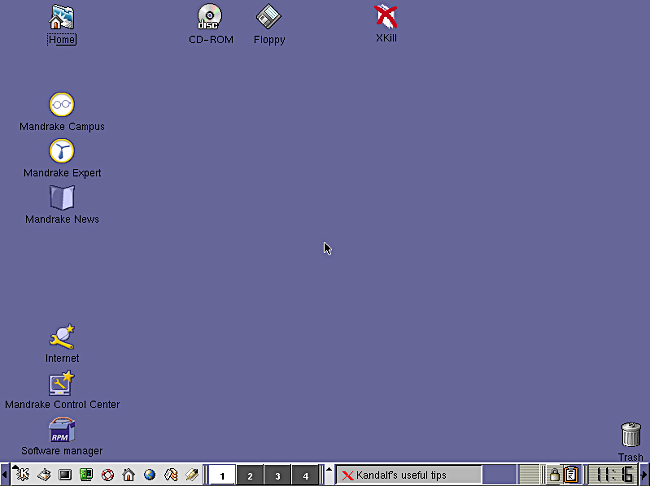
KDE 3.5 on Qt 3 is still quite popular among users and continues to evolve as part of the Trinity project, you can take a LiveCD from here .
KDE 4 in my opinion can hardly be called a runaway success. Four rolled out raw and hastily, many users experienced pain from a radical change of design and instability of the graphic environment. Linus Torvalds in a panic fled from KDE 4 to GNOME, which, incidentally, also did not linger .
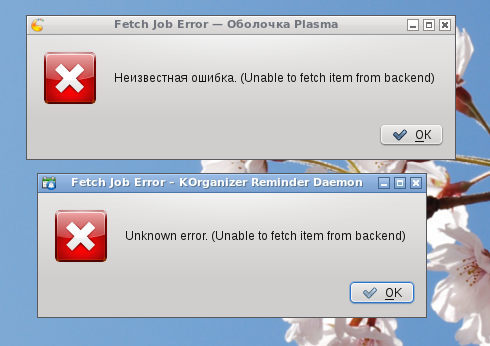
Being quite a true KDE follower for quite a while, I ran into so many glitches on the foursome that I had to temporarily hastily create your own knowledge base. Often there was a need to remove the akonadi database so that KMail does not fall with an error, as in the figure.
[user@localhost ~]$ aconadictl stop [user@localhost ~]$ rm -rf $HOME/.local/share/akonadi/[user@localhost ~]$ aconadictl start However, it should be recognized that KDE 4.14 was already quite stable and comfortable for desktop desktop environments, and new bugs stopped replenishing my knowledge base in G +.
KDE 5.8 Neon .
KDE Plasma 5 uses the KDE Frameworks 5 platform and Qt 5 libraries using OpenGL/OpenGL ES for rendering with hardware acceleration enabled, without changing the interaction principles and interface logic that are familiar to the user.
The transition of all Plasma 5 components to QML and QtQuick 2 technology has been QtQuick 2 . The new Qt 5 provides a smoother graphics output, using the capabilities of OpenGL using the means of accelerating graphics operations on the GPU side, which has reduced the load on the CPU. For systems that do not support OpenGL software rendering mode is provided.
The new edition of the Plasma 5 KWin window manager is free from the tight binding to X11 and can work with both the traditional X server and the Wayland display server. Full support Wayland promise to the next release. On Mir scored are not oriented yet.
Among other changes, Plasma 5 is worth noting the unification, cleaning and optimization of the interface, a new, more contrast design theme Breeze and a new font Oxygen . Support for high-DPI screens has been improved, and the shell has been standardized for various types of devices (workstations, devices with touch screens and media centers) with the ability to switch modes on the fly, without restarting.
Git 10 years
On April 7, 2016, Git turned 10 , this is Linus’s second major undertaking, closely related to the first. Git came to life because of the need to find a replacement for the proprietary BitKeeper, which everyone is used to, but which could no longer be used.
For a while, everything seemed to be going well, BitKeeper made life much easier for developers. They didn’t have to worry anymore about who had the rights to which changes, each of them could work in their own branch of the source tree, the possibility of distributed source code mergers yielded significant savings for everyone. Implicitly, the crisis was brewing, which led to the creation of Git .
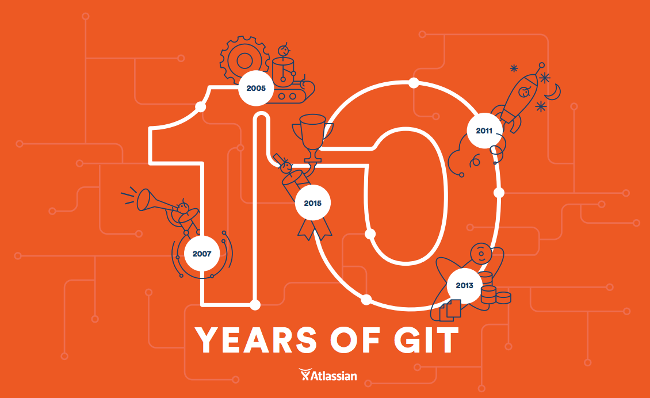
Used materials
')
Source: https://habr.com/ru/post/319176/
All Articles

